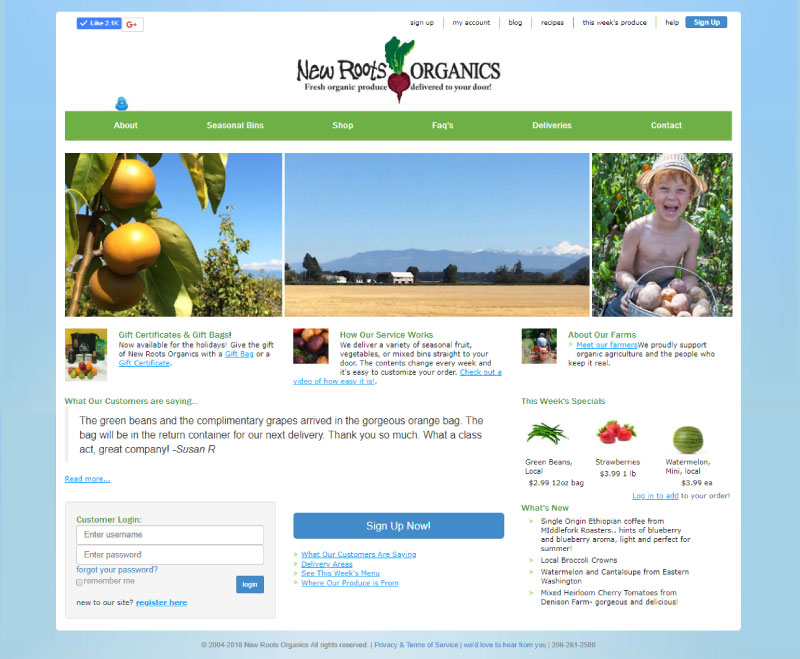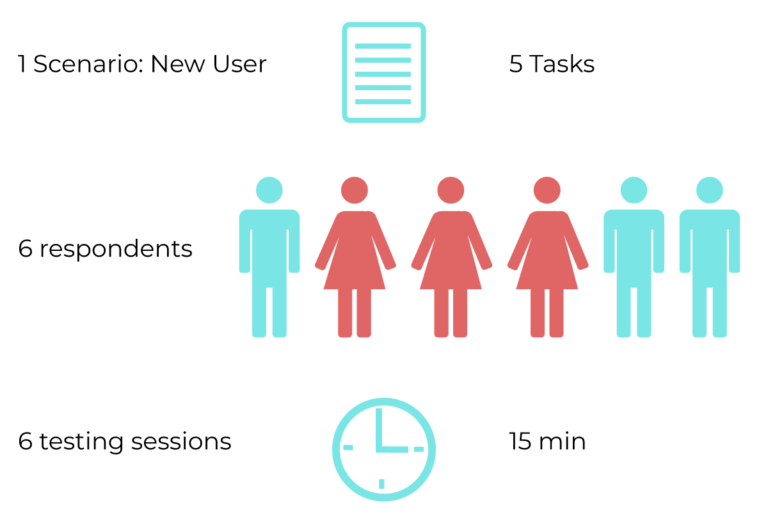Reading Time: 5 Minutes
Project Background
New Roots Organics is one of my academic projects in UX research. I worked as UX researcher and co-designer in a team of two to guide the redesign of New Roots Organics website. This project was part of the Web 204: User Research Methods class at Seattle Central College. I collaborated closely with my colleague David. This is why I often use “we” while talking about the project.
Team: Veronika M. & David H.
Instructor: Laura Barboza
Date: Jan – Apr 2018
UX Methods: Heuristic Evaluation, Competitive Analysis, Formative Interviews, Baseline Testing, Card Sort, Paper Prototype Testing, A/B Testing
My Role
- Designed formative interview questionnaire
- Prepared usability testing scenario and tasks
- Facilitated interviews and usability testing sessions with representative users
- Conducted Card Sort using Optimal Workshop
- Prepared redesign prototypes
- Analysed data using Excel tables
- Delivered reports and presentation about the findings and insights
Organisation Info

New Roots Organics is a community supported agriculture which delivers fresh local produce to the Greater Seattle Area on a subscription basis.
Objectives
Learning
The learning objective of the project was to get an overview of the user centered design process and gain hands-on experience conducting a variety of UX research methods.
Research
The research objectives were to:
- identify the website problem areas,
- make recommendations for a redesign based on customers feedback,
- test prototypes of the new redesign.
User Centered Design Process

Plan phase
Heuristic evaluation
We started with a brief heuristic evaluation in order to highlight areas of the website which need improvement and direct our further research activities.
Competitive Analysis
The next step was conducting competitive analysis in order to find out where NRO’s website stands in comparison with their competition. At this step we also identified some good content organisation and UX practices applied by the competitors.

Research phase

Formative Interviews
In order to get to know the users and understand their needs we conducted formative interviews. The goal was to learn more about the context in which they use the website, as well as to identify what features and information are most important to them.
Baseline Testing
Once we learned more about the users and their needs we wanted to evaluate how well the existing website satisfies them. We chose baseline testing as our next step so that we can set a performance foundation for further comparisons. We prepared several common case study scenarios based on the data collected during the interviews, and conducted six 15 minutes testing sessions with representative users.

Design phase

Card Sort
One of the main issues that we identified during the previous design research activities was the confusing information architecture. In order to make it more intuitive for users, we conducted a card sort using Optimal Workshop, and incorporated the customers feedback in our redesign.
Paper Prototype Testing
At this stage we incorporated the findings from the previous phases into paper prototypes, and conducted a usability testing in order to gather users feedback on the initial redesign. We used the case studies from the baseline testing in order to measure the improvement of the redesign.

Reflections & Learning outcomes
- While working on this project me and my teammate had no contact with the company. We communicated our findings to them at the end of the quarter. If I did this project all over again, I would establish communication with the company stakeholders early in the process. This would have allowed us to tailor our research to the business goals and considerations. We could have also utilized the existing customer base of the company in order to recruit participants for the interviews and testing sessions.
- The paper prototypes testing proved to be an efficient way to further improve the redesign and save potential development time, effort and cost. I expected that the prototypes testing would only confirm the redesign we created, because it was based off our previous research. However, it revealed many flaws of the prototypes. I was disappointed because I felt ownership of the redesign, and I believed that we have taken into consideration every detail. But this way I realised that the prototypes testing is a great method which can reveal issues which you can’t see as a UX researcher or designer. If I had more time, I would have run even one more round of testing in order to confirm the redesign before handing it off to development.
- Applying the design research methods in this class project was a great learning opportunity which helped me gain field experience as a UX researcher in sessions with representative participants, analyze the data, deliver reports and presentations about it. The activities we conducted in class resonated with my previous professional and academic background in marketing research. These first steps in Design Research woke my interest to learning more and continuing my career in the UXR field.
